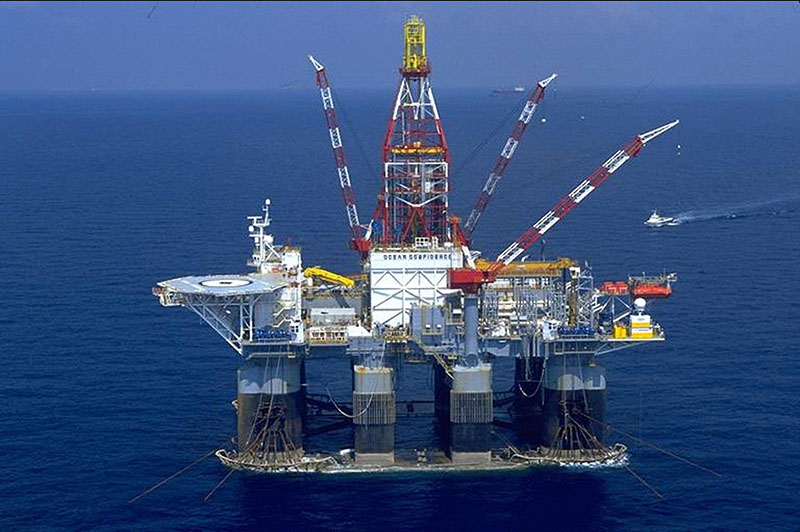(Bloomberg) — Oil climbed above $50 a barrel in New York for the first time since June as declines in U.S. crude inventories and OPEC’s pledge to reduce supply lifted hopes the global glut may clear.
Futures rose as much as 1.4%. U.S. crude stockpiles shrank below 500 million barrels last week for the first time since January, government data show. OPEC pledged in Algiers on Sept. 28 to reduce the group’s output to 32.5 million to 33 million barrels a day in a bid to shrink the world’s bloated oil supplies and boost prices. The market is set to remain oversupplied in 2017 and prices will stall at $55 a barrel as shale drillers get back to work, Goldman Sachs Group Inc.’s Head of Commodities Research Jeff Currie said.
"Crude inventories dropped by more than 25 million barrels in September," said Bill O’Grady, chief market strategist at Confluence Investment Management in St. Louis, which oversees $5.2 billion. "You should see prices rally after such a big number."
Oil has advanced about 12% since the Organization of Petroleum Exporting Countries agreed to the first production cut in eight years. Some analysts have expressed doubt that individual output quotas — to be determined at an official meeting of the group in Vienna on Nov. 30 — will be sufficient to erode the market surplus as several countries boost production to restore disrupted supplies.
Stockpiles Drop
West Texas Intermediate for November delivery rose 51 cents, or 1%, to $50.34 a barrel at 12:05 p.m. on the New York Mercantile Exchange. Prices reached $50.51, the highest since June 22. Total volume traded was about 21% above the 100-day average.
Open interest in WTI, or the number of contracts outstanding, rose to 1.91 million as of Wednesday, the most in three years, according to CME Group Inc. data compiled by Bloomberg.
Brent for December settlement rose 62 cents, or 1.2%, to $52.48 a barrel on the London-based ICE Futures Europe exchange. The contract touched $52.65, the highest since June 9. The global benchmark crude traded at a $1.57 premium to WTI for December delivery.
U.S. crude stockpiles dropped by 2.98 million barrels for a fifth weekly decline, the Energy Information Administration reported Wednesday. A Bloomberg survey had forecast a supply gain. Crude production declined for a second week to 8.5 million barrels a day.
Market Reaction
"The drop in crude inventories over the last several weeks is seen by some as a sign that the market’s rebalancing," said John Kilduff, a partner at Again Capital LLC, a New York hedge fund focused on energy. "It has a lot to do with an increase in crude-oil exports. The local glut is easing but that’s not helping the global glut."
OPEC members will meet next week for talks on implementing an output-cut deal, with Russia joining to discuss how producers from outside the group can participate in the plan, Venezuelan Oil Minister Eulogio Del Pino said in a government statement late Wednesday. Ministers from Saudi Arabia, Algeria, Gabon, Qatar and the United Arab Emirates will attend a meeting in Istanbul, along with Alexander Novak from non-OPEC member Russia, he said.
Hurricane Matthew is heading for Southeast U.S. and may disrupt East Coast fuel shipments. Matthew’s top winds have grown to 140 miles (225 kilometers) per hour, up from 125 mph just hours ago as it churns in the Atlantic 25 miles west-northwest of Nassau, according to the National Hurricane Center. Hurricane warnings now stretch from Florida to South Carolina.
Fuel Prices
Diesel futures for November delivery climbed 0.7% to $1.5935 a gallon after touching $1.5946, the highest since Oct. 12, 2015. November gasoline slipped 0.1% to $1.4914 a gallon.
The crude rally is threatened by the strengthening dollar, O’Grady said. The U.S currency climbed against most of its peers as better-than-forecast jobless claims data boosted speculation that the Federal Reserve will increase interest rates this year. A stronger greenback reduces the appeal of commodities as an investment. Precious and industrial metals declined Thursday.
Oil-market news:
Saudi Arabian Oil Co., known as Saudi Aramco, the world’s biggest oil company is planning to sell shares in the entire business and not just in its refining or distribution operations, Chief Executive Officer Amin Nasser said in an interview. Gunvor Group Ltd., one of the four largest independent oil traders, doesn’t expect oil prices to push much above $50 a barrel for the next nine months as OPEC struggles to meet its goals for curbing production. Higher demand growth will result in “significantly lower” global inventories next year, FGE Chairman Fereidun Fesharaki said on Bloomberg TV.
Bloomberg News by Mark Shenk





